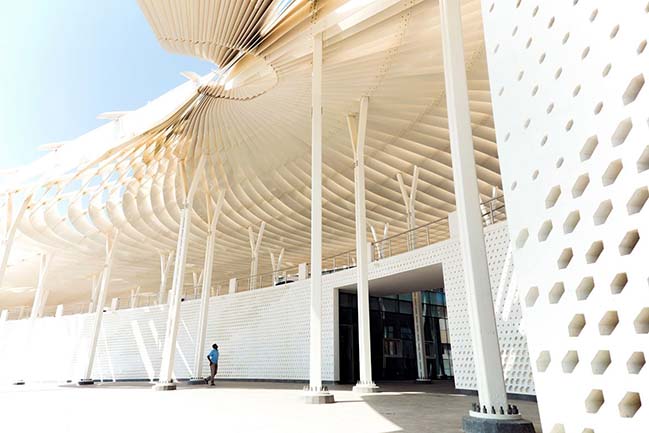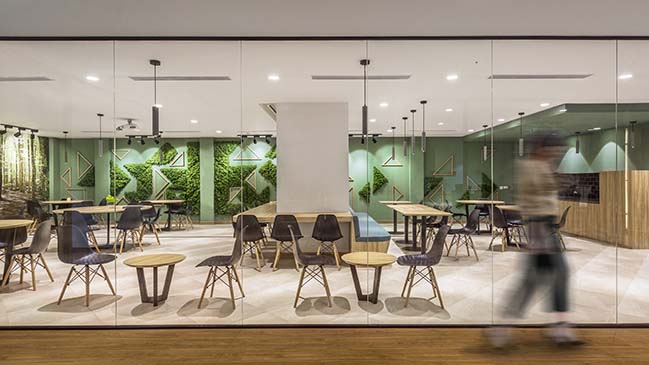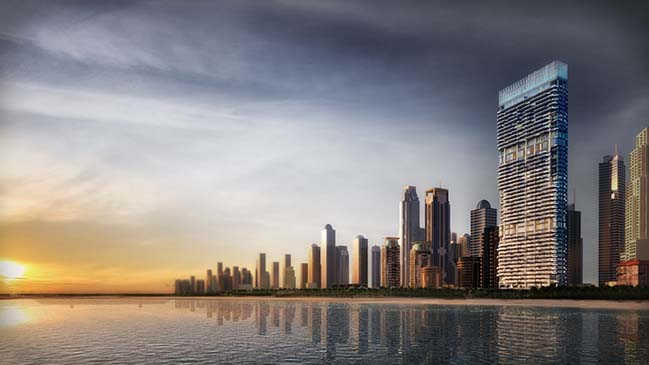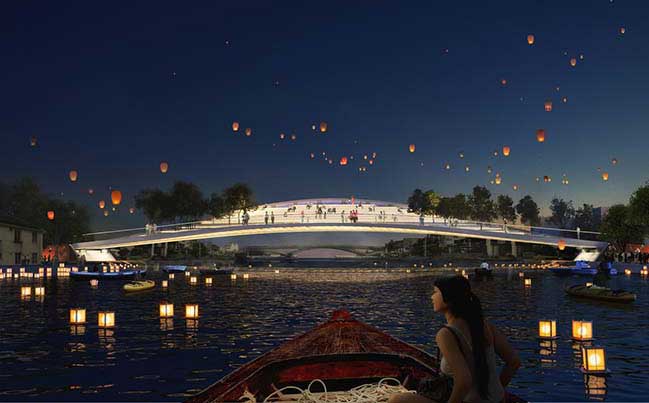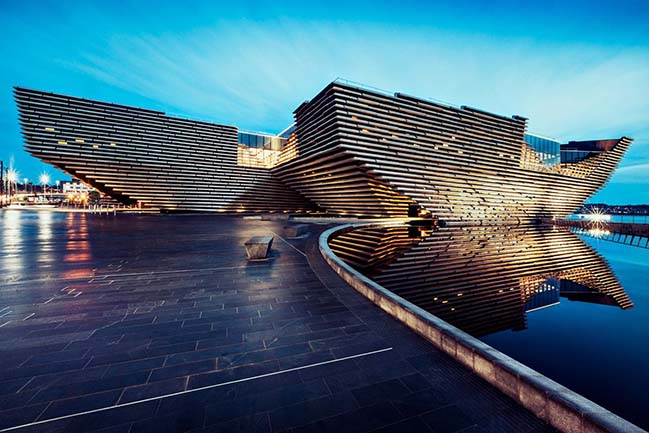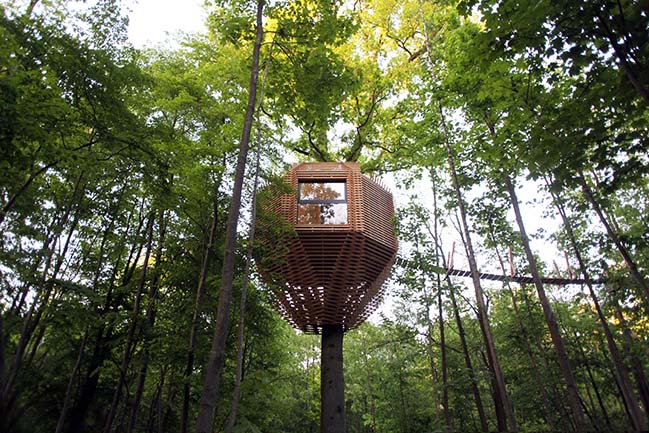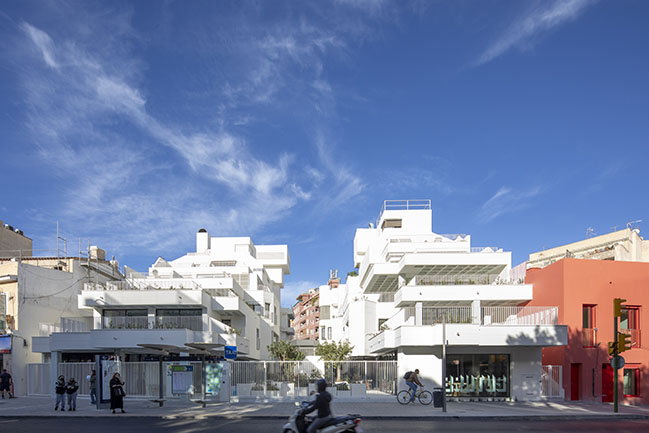02 / 10
2018
Located in the Southern part of Guizhou Province, the Shui Cultural Center is a gateway to Sandu County, the land of the Shui.
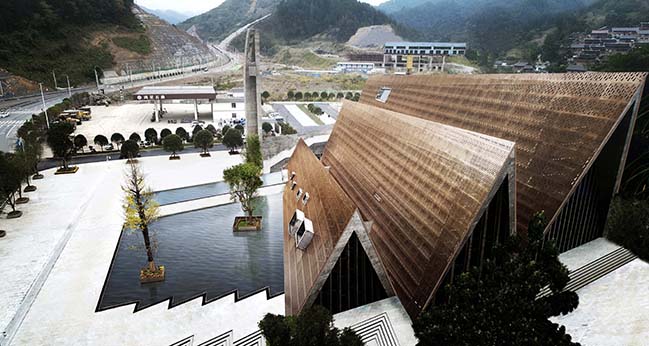
Architect: West-Line Studio
Location: Sandu County, Guizhou Province, China
Year: 2017
Area surface: 13,808.04 sqm
Building surface: 4,223.59 sqm
Design: Haobo Wei, Jingsong Xie
Architecture and Landscape:Hanmin Dan, Yudan Luo
Site Construction Control:Haobo Wei , Hanmin Dan, Minghua Ou
Interior Design: Martina Muratori
Structure: Yuanping Li, Xiaoqiang Yang
Equipment:Hongbo Shi
Research:Lanyu Xu, Danjing Zhong, Zhili Yin, Jing Shi, Yulan Xu,Hong Yang
Graphic: Martina Muratori, Jinda Zheng
Photos: Jinsong Xie, Jinda Zheng, Zhili Yin, Hongsen Kang, Haibo Xie

From the architect: The Shui are one of the ethnic minority groups in China, most of whom live in Guizhou – where West-Line Studio works exclusively – which is why the office pays special attention to researching minority cultures and traditions in order to bring some of their particular elements into the design. Despite being few in number, the Shui people have still retained their own language, together with their unique system of pictographs. They have around 400 characters used mostly during ceremonies and sacrifices. The iconic shape of the cultural center pays homage to the Shui language, following the shape of the character for ‘mountain’. The facade pattern is also inspired by Shui’s traditional characters, starting again from the basic triangular shape of the mountain, which is repeated to evoke the character for ‘rain’.
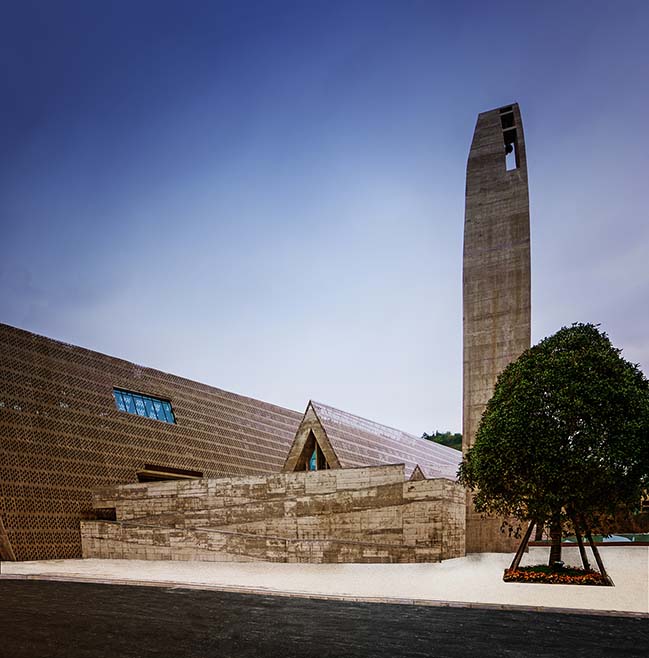
The site, which covers an area of 13,800 square meters, was created by a bend in the river, so it is surrounded by water on three sides. On the other, the West side, a water square welcomes the visitors guiding them to the entrance. Shui means water, which is why this element is so relevant for both the site and project. North of the water landscape is the Yulong tower, with a bronze drum on the top. The drum, cast in bronze, is a typical ritualistic element in Shui culture. Bronze can also be found in their altars, which inspired the architects to use perforated bronze steel plates to cover the building. The pattern makes the plates lighter – a thin skin which creates a contrast with the heavy concrete structure – breaking the sunlight to create a dramatic effect once inside. The concrete is marked strongly by a wooden pattern, given by the pine quarterdecks. Pinewood is one of the most common materials in the Sandu area and the contemporary concrete structure echoes the local traditional wooden architecture.

The building itself consists of three main stripes, which combine all the functions of the tourist-cultural center. The first is the ritual hall, which with its sharp edges, strong colors and narrow space aims to create a strong first impression on visitors, who are clearly stepping into a different dimension. The second stripe still keeps the sharp roof but welcomes visitors with less dramatic tones and serves as reception hall. In the third stripe, which has two floors, at the ground level we lose the pitch roof to find a more conventional space that includes all the main functions: visitor and service center, cafeteria, toilets, business center and an upstairs office area.
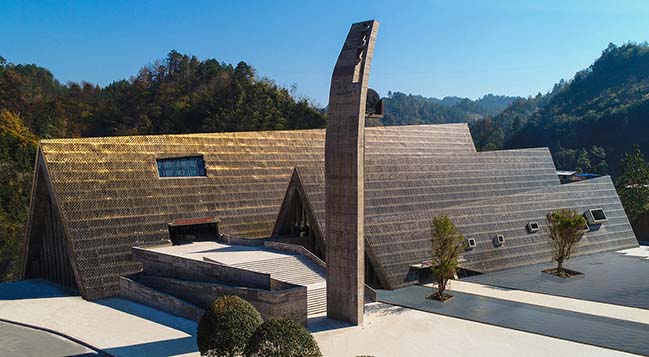
With its iconic and distinct shape, the Shui Cultural Center stands as a new contemporary landmark which pays homage to the local culture and traditional architecture. The Shui culture is evoked using particular materials and shapes but also in recreating a holy space, able to submerge the visitor who is guided into a magic journey through the Shui’s ancestral world.
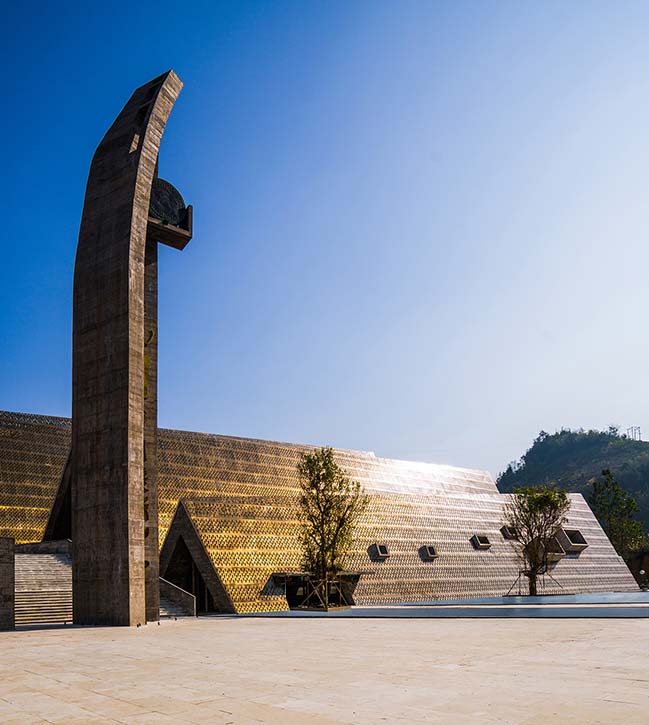
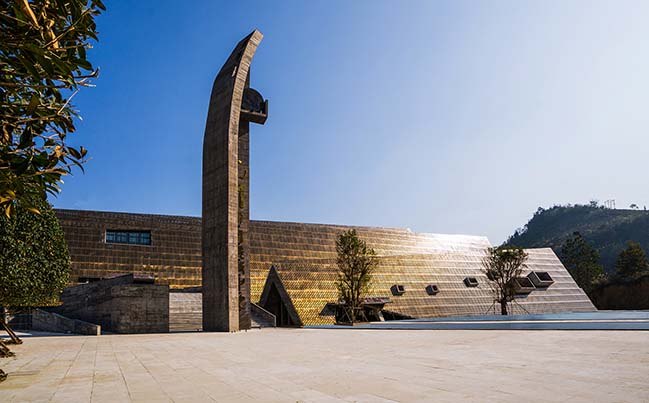
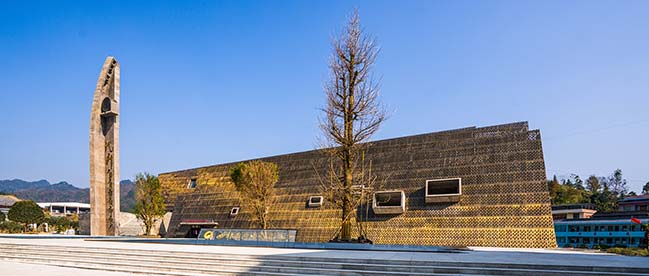
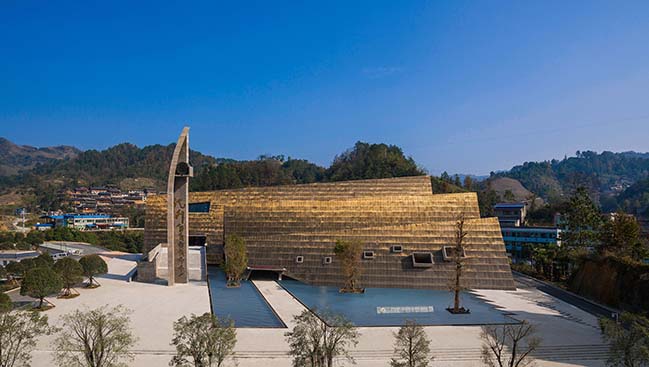
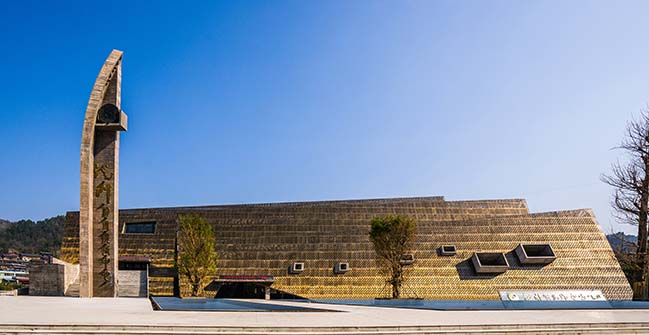

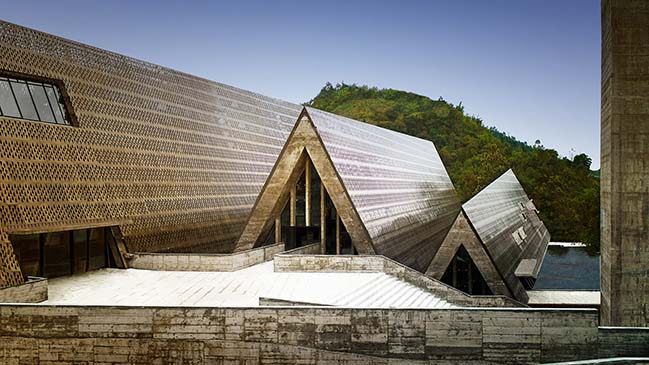
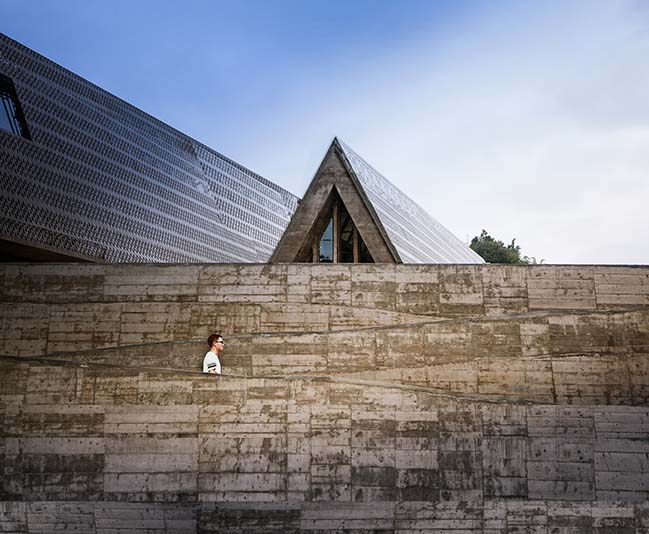
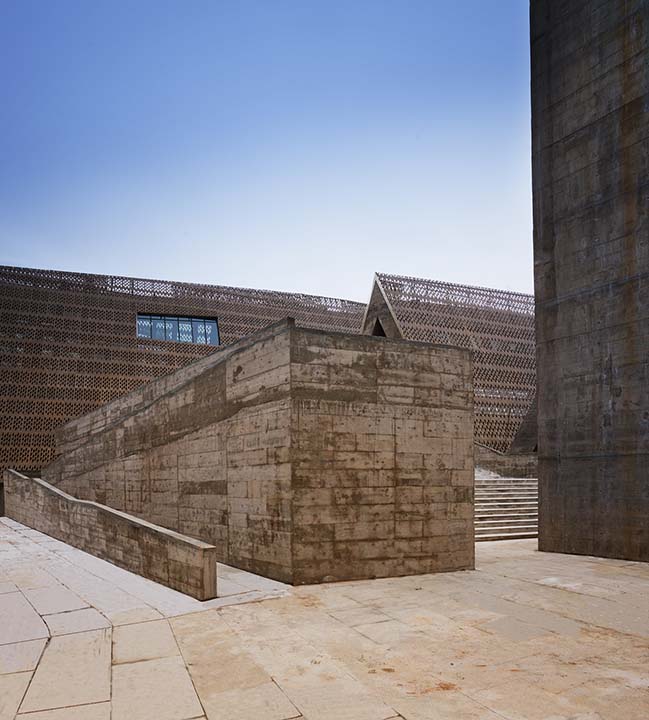


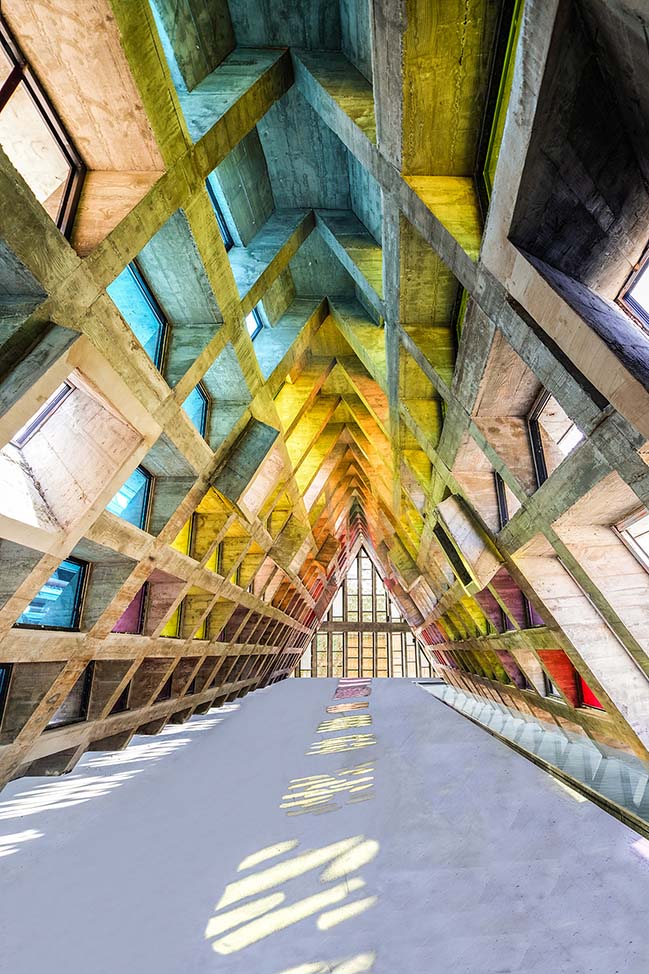

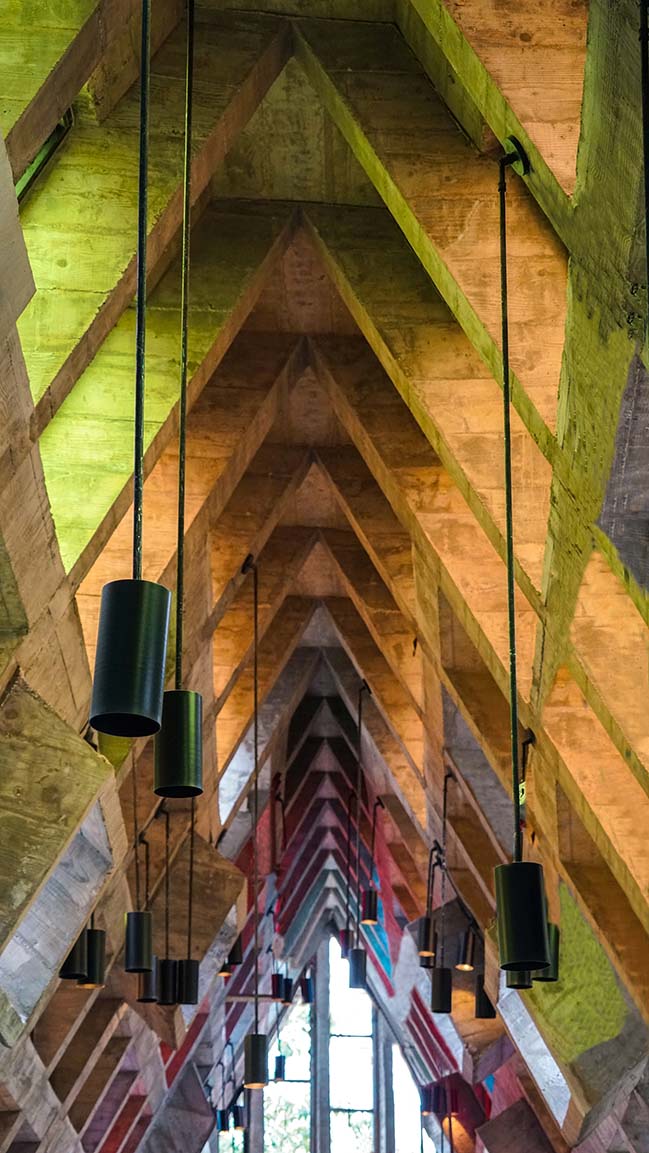
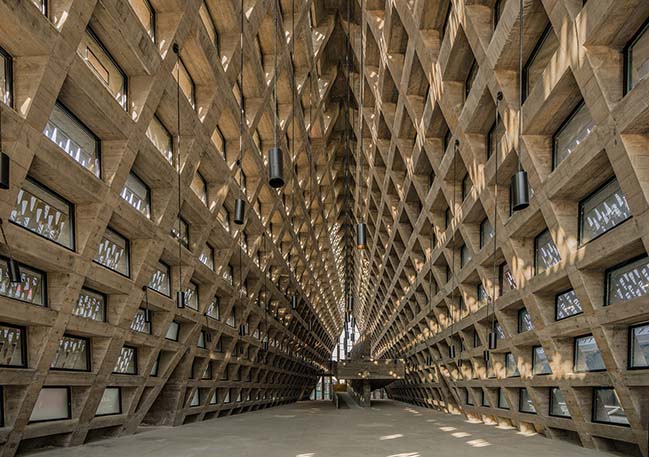


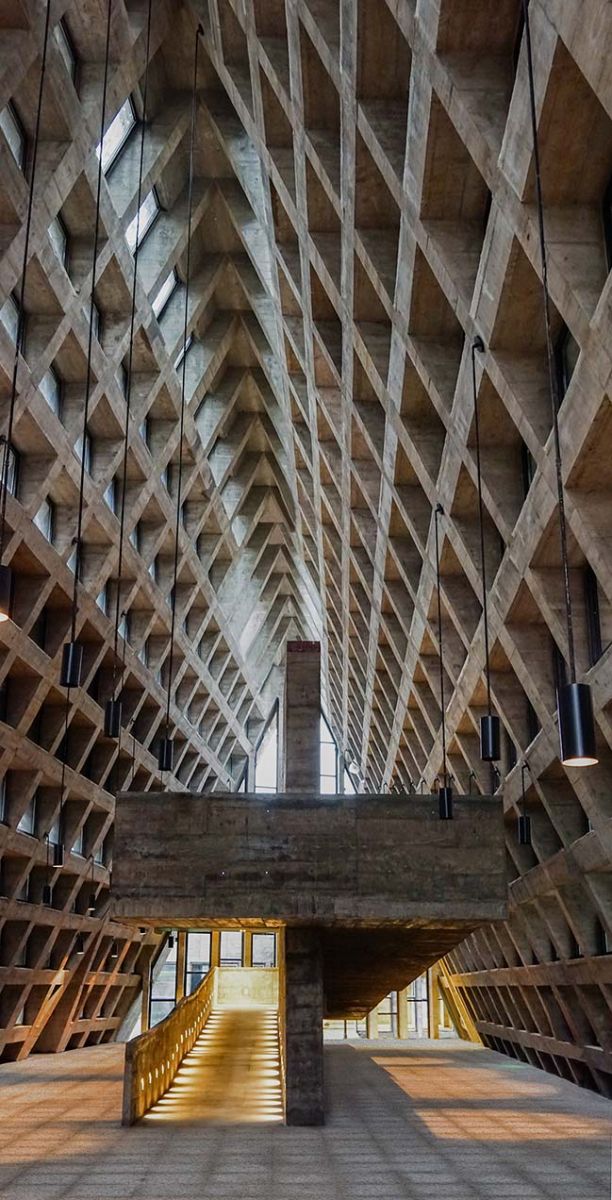

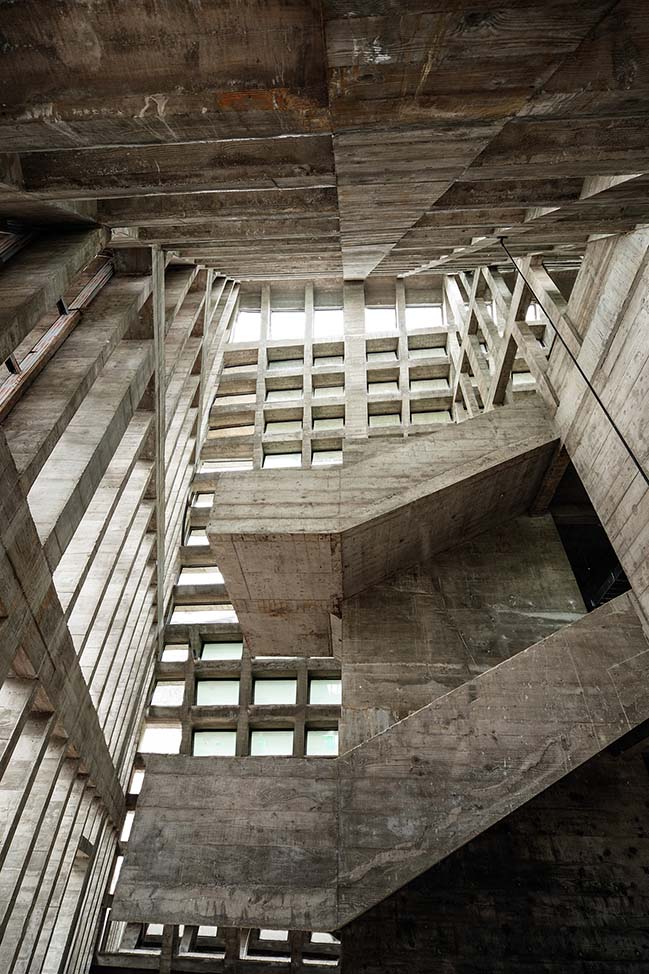


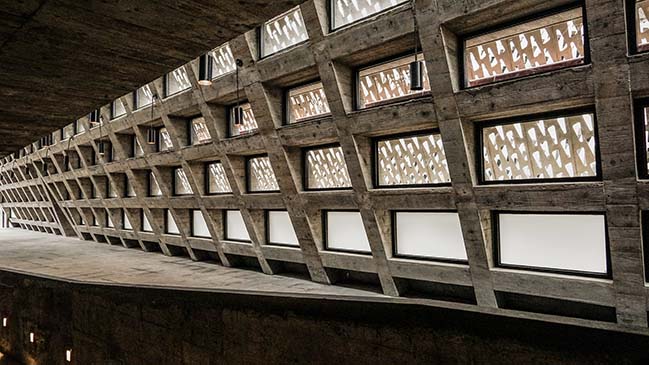

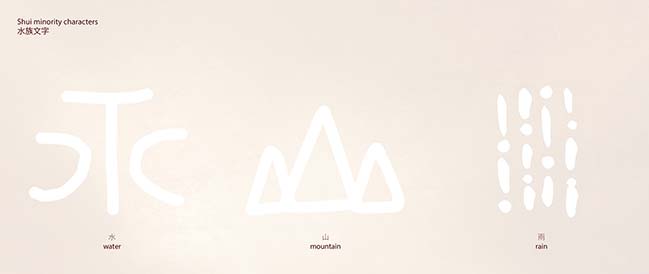

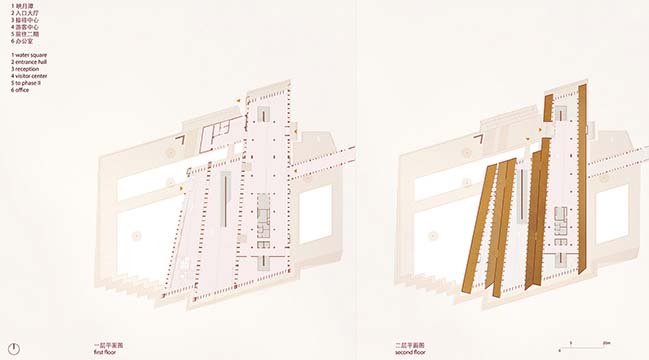
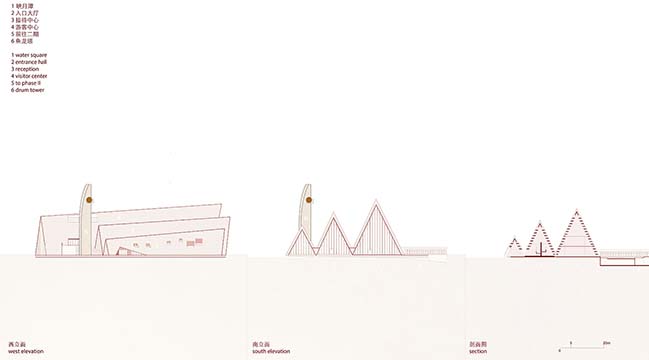
> The Russian Orthodox Spiritual and Cultural Center
> Xiantao Big Data Valley by progetto CMR
Shui Cultural Center by West-Line Studio
02 / 10 / 2018 Located in the Southern part of Guizhou Province, the Shui Cultural Center is a gateway to Sandu County, the land of the Shui
You might also like:
Recommended post: MVRDV and GRAS complete phase one of Project Gomila in Mallorca
